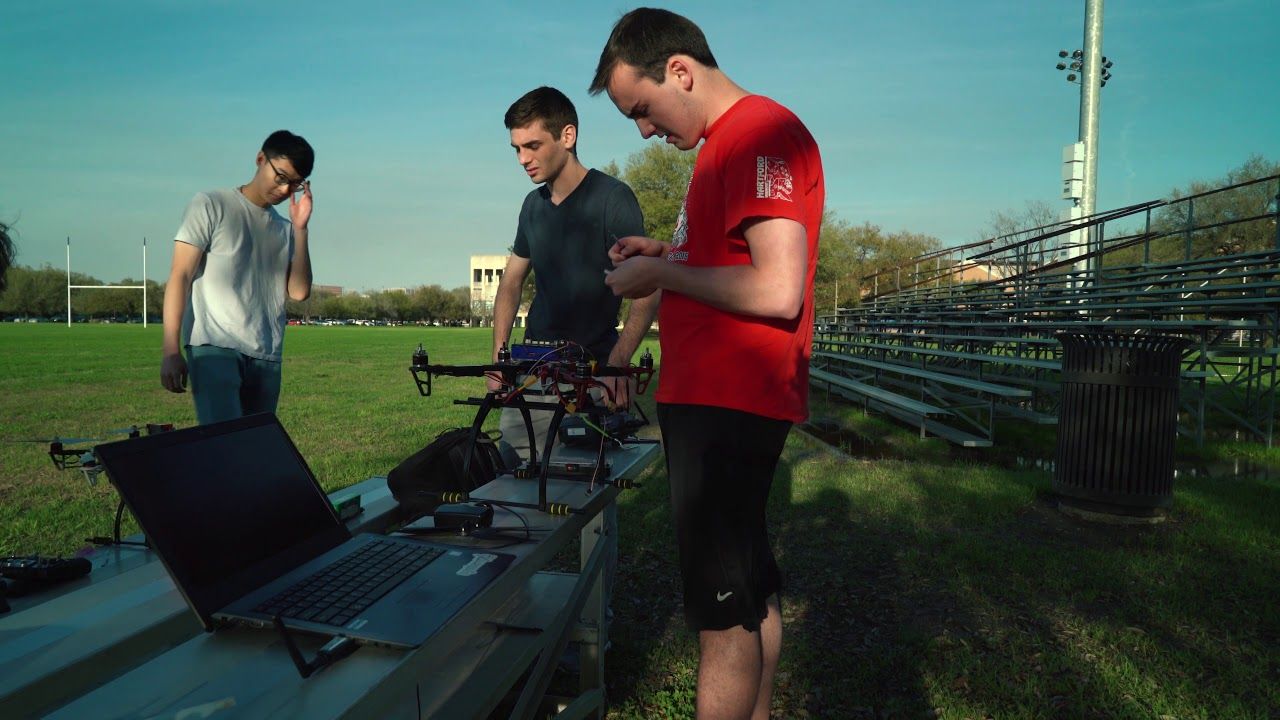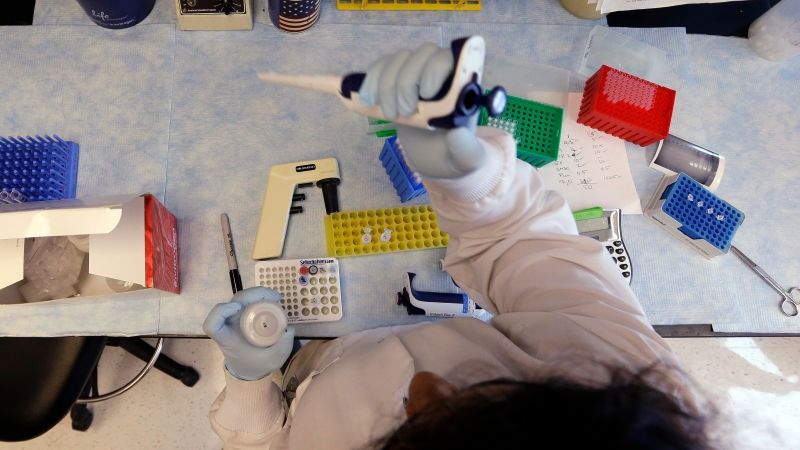Page 9827
Apr 12, 2018
Brain adapts after rare dementia attacks language center
Posted by Genevieve Klien in categories: biotech/medical, neuroscience
People with a rare kind of dementia that initially attacks the language center of the brain end up recruiting other areas of the brain to decipher sentences, according to a new study.
The study is one of the first to show that people with a neurodegenerative disease can call upon intact areas of the brain for help. People who have had strokes or traumatic brain injuries sometimes use additional regions of the brain to accomplish tasks that were handled by the now-injured part.
“We were able to identify regions of the brain that allowed the patients to compensate for the dying of neurons in the brain,” says first author Aneta Kielar, an assistant professor of speech, language, and hearing sciences and of cognitive science at the University of Arizona.
Apr 12, 2018
Russia planning manned spaceflight to moon: Putin
Posted by Genevieve Klien in categories: economics, space travel
Russia is actively implementing a lunar program through 2030, aiming to send astronauts to the moon, President Vladimir Putin said Thursday, Russia’s Cosmonautics Day.
![Russia's President Vladimir Putin (L front) visits the renovated Cosmos pavilion of the VDNKh exhibition centre. [Photo: IC]](https://lifeboat.com/blog.images/russia-planning-manned-spaceflight-to-moon-putin2.jpg)
Putin said “yes” to the question “We are going to fly to the moon, right?” when he visited the Space Pavilion at the all-Russian Center of Achievements of the National Economy, according to the Kremlin.
Apr 12, 2018
SpaceX’s Valuation Climbs to $25 Billion With New Funding Round
Posted by Genevieve Klien in categories: Elon Musk, space travel
Apr 12, 2018
A Global Arms Race for Killer Robots Is Transforming Warfare
Posted by Amnon H. Eden in categories: drones, government, information science, military, robotics/AI
We are now on the brink of a “third revolution in warfare,” heralded by killer robots — the fully autonomous weapons that could decide who to target and kill… without human input.
Over the weekend, experts on military artificial intelligence from more than 80 world governments converged on the U.N. offices in Geneva for the start of a week’s talks on autonomous weapons systems. Many of them fear that after gunpowder and nuclear weapons, we are now on the brink of a “third revolution in warfare,” heralded by killer robots — the fully autonomous weapons that could decide who to target and kill without human input. With autonomous technology already in development in several countries, the talks mark a crucial point for governments and activists who believe the U.N. should play a key role in regulating the technology.
The meeting comes at a critical juncture. In July, Kalashnikov, the main defense contractor of the Russian government, announced it was developing a weapon that uses neural networks to make “shoot-no shoot” decisions. In January 2017, the U.S. Department of Defense released a video showing an autonomous drone swarm of 103 individual robots successfully flying over California. Nobody was in control of the drones; their flight paths were choreographed in real-time by an advanced algorithm. The drones “are a collective organism, sharing one distributed brain for decision-making and adapting to each other like swarms in nature,” a spokesman said. The drones in the video were not weaponized — but the technology to do so is rapidly evolving.
Continue reading “A Global Arms Race for Killer Robots Is Transforming Warfare” »
Apr 12, 2018
Making custom qubits
Posted by Genevieve Klien in categories: computing, particle physics, quantum physics
For the first time, we’ve made a molecule by pressing two atoms together to make them bond on command. This could help build better qubits for quantum computers.
Apr 12, 2018
Scientists Create Beautiful Iridescent Material That Could Be Edible
Posted by Genevieve Klien in categories: food, physics
What makes something red, or blue, or green? It’s all in the way light bounces off its surface. Something that primarily reflects light with shorter wavelengths will appear bluer, while something that reflects longer wavelengths will appear redder. By playing around with that principle, scientists have created a material that, much like soap bubbles and certain insect wings, displays a gorgeous iridescence—a shifting rainbow of colors they can tweak with the same surface.
Even more interestingly, the researchers made this material from common cellulose, the simple stuff that makes up paper and which can be extracted from wood, cotton, or other renewable sources. We’ve already mentioned scientists arranging cellulose fibers in a way that makes them appear incredibly white. But now instead of laying fibers, a team of physicists are molding cellulose films with tiny, regularly spaced impressions (like an upside-down Lego piece).
The outcome was a thin, single-centimeter iridescent film that reflects light based on the spacing of the dots, according to the paper published recently in Nature Photonics.
Continue reading “Scientists Create Beautiful Iridescent Material That Could Be Edible” »
Apr 12, 2018
Trouble Detected in Infamous Dark Matter Signal
Posted by Genevieve Klien in category: cosmology
Apr 12, 2018
Scientists Edit Thousands of Genes at Once With Upgraded CRISPR
Posted by Genevieve Klien in categories: bioengineering, biotech/medical, genetics
When the gene-editing technology CRISPR first made a splash back in 2012, it foretold a future in which curing diseases might simply involve snipping out problematic bits of genetic code. Of course, innovation is rarely so straightforward. As incredible as CRISPR is, it also has some pretty sizable flaws to overcome before it can live up to its hype as a veritable cure-all for human disease.
A new study published this week in the journal Nature Genetics tackles one CRISPR complication. CRISPR gene-editing systems can easily cut many pieces of DNA at once, but actually editing all those genes is a lot more time-consuming. Now, scientists at UCLA have come up with a way to edit multiple genes at once.
When scientists use CRISPR for genetic engineering, they are really using a system made up of several parts. CRISPR is a tool taken from bacterial immune systems. When a virus invades, the bacterial immune system sends an enzyme like Cas9 to the virus and chops it up. The bacteria then adds short bits of virus DNA to its own code, so it can recognize that virus quickly in the future. If the virus shows up again, a guide RNA will lead the Cas9 enzyme to the matching place in the virus code, where it again chops it up. In CRISPR, when that cutting is done, scientists can also insert a new bit of code or delete code, to, for example, fix disease-causing genetic mutations in the code before patching it up. But delivering that new code and making the patch is where it can get especially tricky.
Continue reading “Scientists Edit Thousands of Genes at Once With Upgraded CRISPR” »
Apr 12, 2018
World’s first electrified road for charging vehicles opens in Sweden
Posted by Genevieve Klien in categories: energy, sustainability, transportation
Stretch of road outside Stockholm transfers energy from two tracks of rail in the road, recharging the batteries of electric cars and trucks.


















